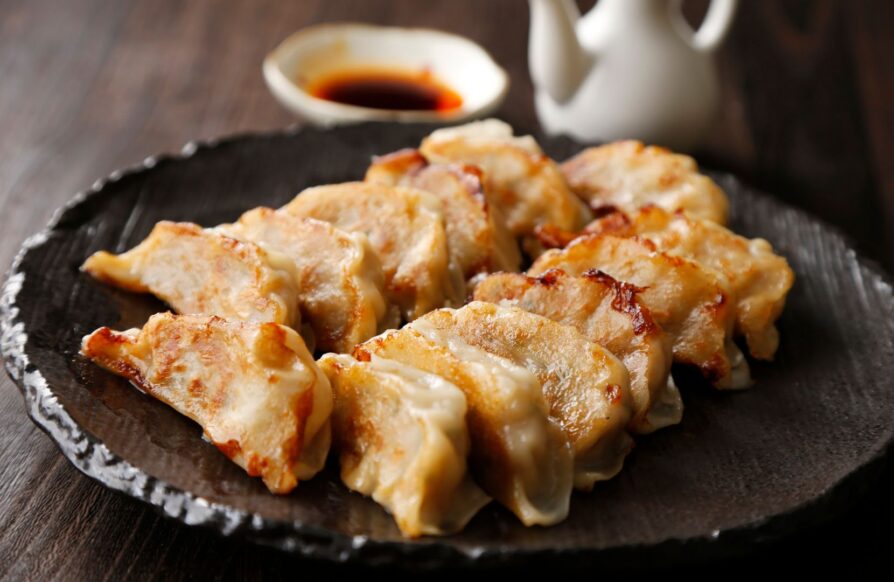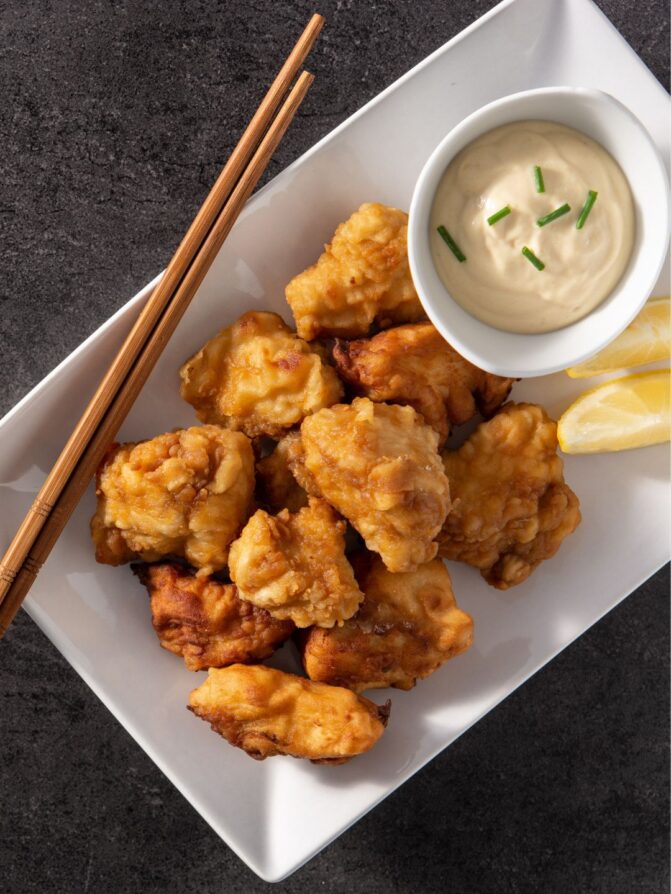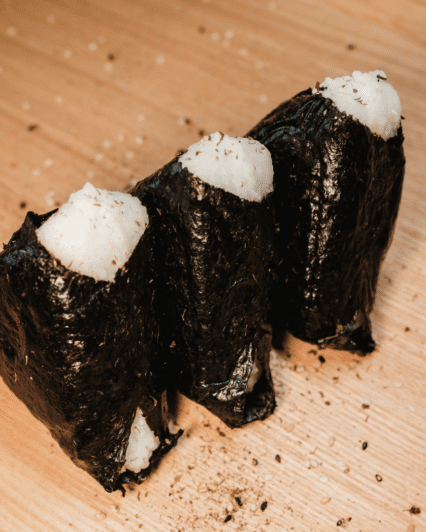Popular Japanese street foods PART 2
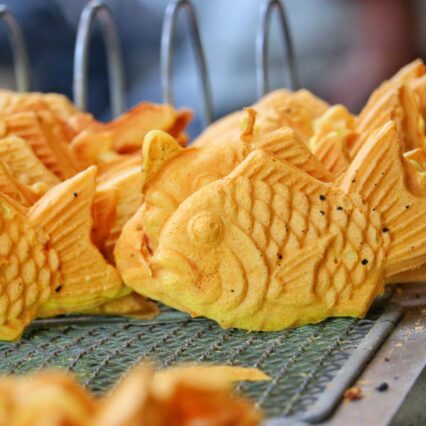
Popular Japanese street foods PART 2
A bit ago we took a first look at Japanese street food, including some of the most popular ones like Takoyaki and okonomiyaki. Today, we’re continuing with part two of some of our favorite foods you’ll find at yatai — that’s Japanese food stalls — and what it is that makes them so tasty.
Whether going to Japan or just looking for inspiration at home, here’s some more great yatai options.
On to more deliciousness!
Gyoza
Is there any culture that doesn’t have dumplings? As far as we can tell, dumplings are universal and come in as many shapes, sizes, and persuasions as humans themselves. Never mind the fact that “What is a dumpling?” is a question that none of us can really give a satisfactory answer to — point is, we all know dumplings when we see them. And gyoza sure are dumplings.
More importantly, though, is that they’re ridiculously tasty.
Similar to the Chinese jiaozi from which they originate, as well as Korean mandu, Tibetan and Nepalese momo, and endless others from Austria to Ukraine to Iran, gyoza consist of a thin, unleavened dough wrapped around a filling. The inside can be many variations of meat or vegetables — generally minced, and often with cabbage — combined with soy, seasonings, and aromatics.
One thing that distinguishes gyoza from its Chinese dumpling ancestors is a thinner wrapping.
They can be cooked in many ways — you’ll often find them steamed or deep fried in the US — but the most popular method at gyoza yatai is to use a pan to both steam and pan-fry them in one swoop. This makes the wrapping soft with a crispy dumpling bottom, while keeping the filling succulent and juicy. Expert gyoza chefs will have perfected this to the point where adjacent gyoza will have one long, connected layer of crispiness, which is a very popular quality for obvious reasons.
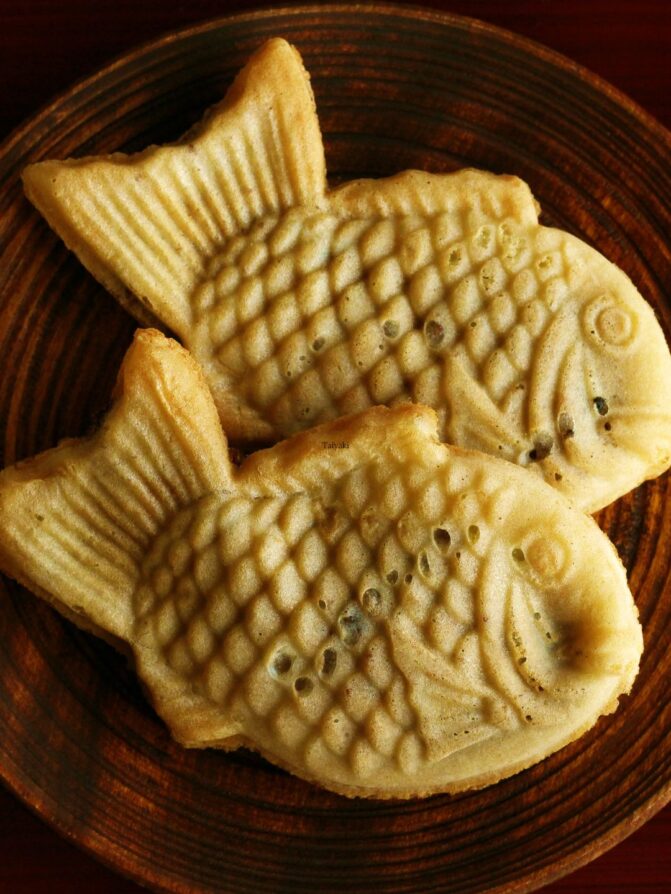
Taiyaki and imagawayaki
Yes, these are two different things, but we’re including them as one entry here because in essence they’re the same thing, just shaped differently. (And then there’s dorayaki, which is another cousin in this family!) But before we get ahead of ourselves, what they are: slightly sweet, pancake-like dumplings filled with red bean paste or, more recently, custard, chocolate, or other sweet or even savory fillings.
Unlike imagawayaki, which is a more standard circular shape, taiyaki are shaped like cute little fish.
Imagawayaki have been around for over 200 years and it’s easy to see why. The slight sweetness isn’t overpowering but still satisfies your craving for confections. It’s perfect!
These can be found both pre-made at stores or fresh at specialty yatai, especially around festivals. The little stuffed cakes are cooked en masse using a griddle similar to a waffle iron minus the gridiron crosses — one of these griddles can have a couple dozen imagawayaki slots or more. After pouring batter into these griddle indents, the chef will add a generous portion of azuki red bean paste (or whichever filling they’re using) on top of the middle while the batter’s still relatively liquid.
Once the outside is sufficiently cooked, the chef flips this portion of the imagawayaki onto another griddle slot which has the second side of the imagawayaki cake. These two sides encase the filling, cook briefly, are flipped one last time, and then after a few minutes are done!
The process for cooking taiyaki is the same, except it predictably uses a different griddle with specific fish-shaped indents for cooking.
Not only are both these pastries subtly addicting, but it’s also pretty mesmerizing to watch them being made. That’s the best of both worlds.
Karaage
Karaage has become more well-known in North America in recent years, which makes sense given the American love for fried chicken and seeing as karaage is just that: bite-sized fried chicken. What’s not to love? (Answer: Literally — and we mean “literally” literally, not figuratively — nothing. There’s nothing not to love.)
Technically, karaage can be various meats, but it’s most commonly chicken, so we’ll stick to that here.
To prepare karaage, the chicken is first marinated in seasoning. The exact marinade recipe can vary, but it often includes ginger, soy sauce, sake, and mirin, a common flavor profile for many Japanese foods.
Unlike certain American fried chicken methods, karaage is done by dredging chicken in a lighter dusting of just flour and another starch (commonly potato or corn), as opposed to a heavier dredge of a buttermilk, milk, or egg-based batter. This also differentiates karaage from tempura frying, which also uses a batter, albeit one whose liquid base is ice water.
Another key difference is that karaage is, as mentioned above, cut into much smaller pieces of boneless chicken. This convenient size and addictive crunch and taste makes them popular at both certain yatai food stalls and as a shared snack at izakayas, too.
Along with the bite-size convenience and satisfying texture, the meat in karaage is flavorful and juicy. Variations in the marinade can particularly emphasize certain tastes, but in general the crispy chicken is succulent and savory with a hint of sweetness.
Whether you’re eating karaage as a bar snack or street food, you’ll find yourself going in for bite after bite and eventually going “Hey, where did all the karaage go?”
We’re obviously biased, but we think all in all Japan’s gotten pretty good at making ridiculously delicious food. Whether as a snack or full meal, in a restaurant or yatai, you’ll come away from all these craving them pretty much forever.

